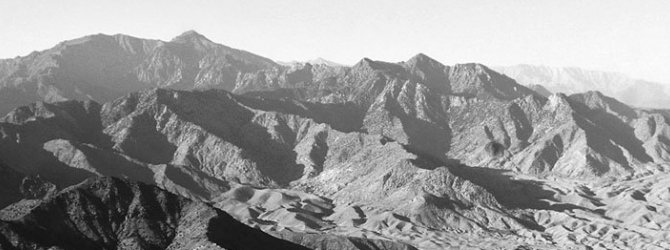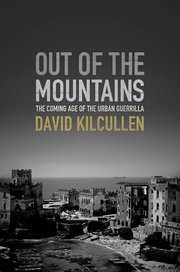-
Future War: A Review of David Kilcullen’s ‘Out of the ...
Future War: A Review of David Kilcullen’s ‘Out of the Mountains’

What will future conflict look like? This question is the subject of David Kilcullen’s 2013 offering, Out of the Mountains; The Coming Age of the Urban Guerrilla (2013). It challenges us to question our preconceptions, to break away from siloed thinking and to be open to contributions from other disciplines. Having explored environmental drivers of conflict and instability, I also appreciate Kilcullen’s understanding of how the world’s environmental challenges are intertwined with its political and economic challenges.
Kilcullen is a renowned thinker on counter-insurgency and was the advisor to General David Petraeus during the ‘surge’ in Iraq. I first read his work on Al Qaeda during my honours year at the University of Queensland, and was later lucky enough to sit in on discussions with him.
Out of the Mountains starts in Afghanistan, but ends with the conclusion that future war won’t look like Afghanistan. Kilcullen takes the reader on a journey to Somalia and the 2008 hotel attacks in Mumbai (for those interested in the study of terrorism this case is a must read), he explores the control structures of non-state armed groups, and finishes with the Arab Spring uprisings.
Kilcullen explains that he “wanted to find a set of ideas that would do a better job at explaining the conflict ecosystem – the nonlinear, many-side, wild, and messy world of real conflict - than do traditional binary paradigms such as counterinsurgency.” His thesis is that four megatrends will shape future conflict: population growth, urbanisation, littoralisation (what he denotes as “the tendency for things to cluster on coastlines”) and connectedness. Thus Kilcullen’s cities of the future are crowded, urban, coastal and connected. To those familiar with the Arab Spring protests some of these trends are clearly apparent – connectivity was a defining aspect of the uprisings. It is also not hard to see how population growth will have implications in environments that are already defined by scarcity.

Kilcullen concludes that future theatres of conflict will be different to those we are engaged in today, and he questions whether we are well prepared to fight in these very messy, congested, populated city-theatres of the future. For militaries increasingly familiar with drone warfare, or mountainous terrain battles, these environments pose obvious challenges. Interestingly, he also recommends seeing the city as alive, as a system, and not as a static thing that we should seek to ‘stabilise.’
What I take away from Kilcullen’s work is that the answers to the challenges we are facing today do not lie in one discipline. In order to solve Kofi Annan’s ‘problems without passports’ (think Ebola, transnational terrorism, natural disasters) we will need to pool our resources organically, and in a way that acknowledges insights from different disciplines, from political science, economics, psychology, and geography.
At the WANA Institute we already draw from the insights of different disciplines to answer our research questions – here on the Human Security team we are leveraging tools from ‘design thinking,’ such as journey mapping, to understand how to better prevent violent extremism. These are tools traditionally employed in market research, but with open minds and preliminary analysis, we have realised that journey mapping is the ideal way to explore radicalisation pathways. Stay tuned for more on this exciting research.
I cannot wait to read ‘Blood Year,’ the latest of Kilcullen’s books, which focuses on Daesh and the War in Iraq. I am curious to see what the man who influenced Petraeus has to say about the way the war was fought, and its unintended consequences.

